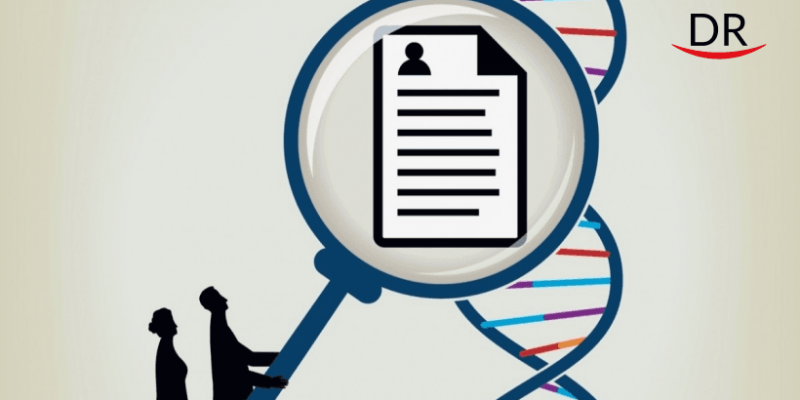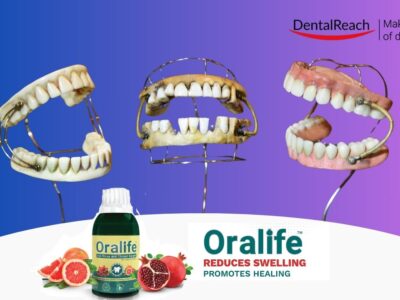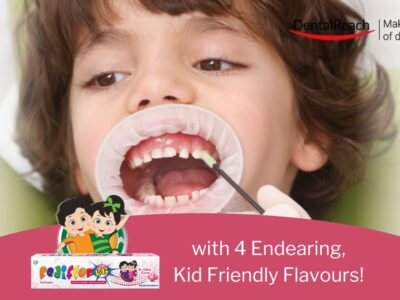
Dr Gargi Roy Goswami (Chennai, India) is a dental geneticist. She is the Founder and Director of KROYNAS Pvt. Ltd. and the Indian Academy for Clinical and Dental Genetics (#IACDG). Founder and Chairman of International Saliva Summit of India, an honorary invited Peer Reviewer for the National Research Foundation, South Africa and former faculty at IDA, Mumbai. She has initiated a voluntary endeavour named COGNUS ( Community for Engrossing and Novel Undergraduate Science) to promote undergraduate research in India as well as their holistic uplifment. She is one of the coveted speakers at the DRDCA 2020 International.
Have you ever wondered “why” our tooth anatomy is different despite the fact that the underlying mechanism of tooth development remains the same? We have learnt about all the stages of tooth development during our oral biology classes in the dental curriculum.
Have you ever wondered “why” there exists such a broad classification of dental caries? We all struggle to mug up the classification to get a good score in the initial days of our dental studies. I wonder whether you will agree that there are definite answers to the above questions! Well, it is time that we come out of the defined box of “What” and “How”. Let us explore the world of “Why”.
Is this possible?
The answer is: Yes! Of Course!

Let me take you back to the point where we started this discussion. Our first question was to understand the reason behind the different tooth anatomy. The answer lies in the fascinating science of genetics! And here it goes. For each tooth, the development process starts from a single cell following the basic steps of bud, cap, bell and advanced bell stages. For each tooth, the location and the shape are predetermined during development through a process called cellular differentiation. This complex process has many intricate networks which are guided by differential gene expression. Several switch-on and switch -off mechanisms of gene expression control these events. This results in different morphological tooth structure.
Though the above information is an oversimplification of the various underlying genetic facts, it definitely gives us a better understanding than before. Thus, an attempt to find the “why” gives us a better concept and we can visualize the inherent science comprehensively. The above example was only one among the many.
In dentistry we talk a lot about various kinds of pathological states apart from the normal physiological mechanisms. There is plethora of information in literature about genetic factors contributing to dental caries, missing tooth, supernumerary tooth, periodontitis, cleft lip and palate, and oral cancer, to name a few. In the daily out-patient department we routinely encounter many of these pathologies. We can reach to a provisional or definitive diagnosis based on the clinical symptoms that are visible to our naked eye. We also resort to commonly used diagnostic imaging modalities as adjuncts as a supportive confirmation to our conclusions. I am pretty sure right now you must be visualising your busy OPD days!
In many instances, as clinicians we also experience many cases where apparently there are no clinical or radiological manifestations of an oral disease. These patients are appreciated as to have a good oral hygiene maintenance. After few months, the same patient might turn up with an ulcer or a white patch in buccal mucosa. The next thing that we do is to give them symptomatic relief after a sneak peek into their habit history along with other necessary diagnostic and clinical examinations. This is a common scenario. Primarily we focus on “What” is the problem and “How” to treat it. In the process aren’t we missing out a major part in our understanding of the “WHY” behind the ailment?
Well, let me put up a very common example. Say, an elderly diabetic patient has presented with an oral premalignant condition such as an extensive white patch in the buccal mucosa alongwith an history of intermittent and mild pain. Let us also assume that the radiological manifestations are almost near to normal. As an obvious protocol, our present systematic approach would be to relieve his pain with some palliative treatment strategies and put him on some antioxidants. As the patient is diabetic, the gold standard to understand the malignant potential, that is, biopsy will not be a preferred choice here. Suggesting a regular follow -up , say , after every three months, and other than sending back the patient – do we really have a choice? By waiting and watching are we not making a provision that the lesion worsens? As a clinician we will be wishing that the treatment modalities work and the lesion disappears. What if it does not turn out to be as per our wish? Do we wait till the time the lesions progresses more so that we have some radiological evidence of bone loss ? I know there will be more such questions hovering our minds when we face such recalcitrant clinical scenario.
Now, the most important question is: Do we have a choice?
Again the answer is: Yes! We do!
Here in comes the role of genetic and genomic technologies. Implementing technologies like next generation sequencing, we can get an extensive view of the cellular DNA. We can get an overview of what exactly is going wrong inside the lesion and probably also about the malignant potential of the same. With such information in hand, our treatment protocol can be modified to a more focussed approach rather than hit and trial methods to rule out the actual problem. So herein lies the importance of genetics education in dentistry.
Another common case in clinical dentistry is gingival hyperplasia. For example, gingival hyperplasia may be manifested as an isolated condition, as one of the clinical features of a syndrome or it can be due to the side effect of certain medications. These different forms call for completely different treatment strategies. The inherited forms need to be surgically resected while the form due to side effect of medication can be reversed simply by eliminating the drug regime. Thus, a dentist needs to able to take a family and medical history to distinguish the forms.
The role of a genetic pedigree chart comes into play in such situations. This pictorial representation of the genetic basis of the condition through the pedigree chart will be helpful to counsel the patient not only to make him/ her understand the disease etiology but also to convince about the need of a surgical resection. This kind of holistic approach by the dentist is possible only with an understanding of genetics.
Apart from the obvious importance of making a correct dental diagnosis, there are several reasons why genetics and genomics should be taught to dental professionals. Advanced molecular technologies like sequencing and genotyping has also improved dramatically resulting in faster and cheaper genetic testing. This has led to increased genetic diagnoses and understanding of the pathogenesis of inherited conditions.
There are more than 700 genetic conditions with craniofacial anomalies with many requiring complex dental treatments. For example, more than 3000 genetic tests are currently available encompassing a variety of genetic disease types. Dentists need to have an understanding of genetics to gain an ability to evaluate these tests and decide whether or not to incorporate them into their clinical practice. This will also help the dentist to consult with non‐dental health care providers such as geneticists and genetic counsellors and call for their help whenever required.
Approximately 30 percent of 4,000 genetic diseases known, affect the head and neck region. Understanding the genetic contribution to these diseases should lead to better diagnostic tests as well as etiological-based treatments. Genetic medicine is transforming healthcare to a proactive paradigm. This is permitting individualization of care to optimize health and well-being. Well, many who may feel that these developments will not impact clinical dentistry, this may be a converging vision. As we understand more about the genetic basis of growth and development, as well as genetic susceptibility to disease, it is apparent that the oral health may be increasingly viewed in a systemic context.
Knowledge of the individual genetic characteristics of patients will be important factors in the diagnosis of disease risk and susceptibility, as well as in predicting response to treatments.
Recent advances in technologies allow large-scale analysis of gene expression. This information may be combined with methods that identify genetic variants to characterize oral pathologies. These advances will impact the practice of dentistry and require dental health professionals to have a greater understanding of genetics in order to provide better and more personalized patient care.This will contribute to the health and well-being of the patients.
Thus, dentists can become a part of greater scienctific community by understanding and appreciating the appropriate role of genetics in health care.
References
- Bretz WA., et al. “Evidence of a contribution of genetic factors to dental caries risk”. The Journal of Evidence-Based Dental Practice 3.4 (2003): 185-189. 20.
- Vogelstein B and Kinzler KW. “The multistep nature of cancer”. Trends in Genetics 9 (1993): 138-141. 21.
- Jurel SK., et al. “Genes and oral cancer”. Indian Journal of Human Genetics 20.1 (2014): 4-9. 22.
- Ah-See KW., et al. “An allelotype of squamous carcinoma of the head and neck using microsatellite markers”. Cancer Research 54 (1994): 1617-1621.
- Giannobile WV, Braun TM, Caplis AK, Doucette-Stamm L, Duff GW, Kornman KS.
- Patient Stratification for Preventive Care in Dentistry [published online ahead of print June 10, 2013]. J Dent Res. 2013; 92(8):694-701. doi: 10.1177/0022034513492336. Accessed August 17, 2013.
- Science Daily. University of Adelaide. Genetic techniques have role in future of dental care. http://www.sciencedaily.com/releases/2014/03/140306095115.htm.




















Comments